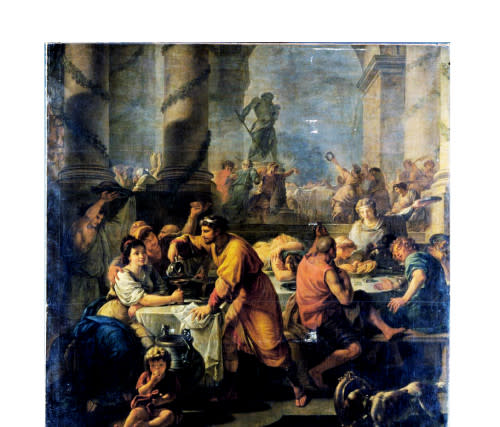The fascinating significance behind our winter solstice celebrations

The winter solstice occurs when one of the Earth's poles is at its maximum tilt away from the Sun. It happens twice-yearly in each hemisphere. It is the day with the shortest period of daylight and the longest period of darkness.
In the past the winter solstice was important because of our ancestor's dependence on the seasons to grow crops. Starvation was common during the first months of winter and in temperate climates so in many cultures, the midwinter festival was the last feast, and celebration, before deep winter began.
RELATED: The importance of winter solstice in Indigenous culture
The majority of cattle were slaughtered to avoid spending resources on animal feed during the winter, marking one of the only times of the year fresh meat was widely available. In most cultures, the winter solstice marks the symbolic death and rebirth of the sun as it began the reversal of longer nights and shorter days.
Celebrations in western countries
The western world can thank ancient Rome for its midwinter traditions.
In ancient Rome, the winter solstice was dedicated to Saturn, the God of agriculture and time. This served as the inspiration for the festival of Saturnalia -- a week-long party, typically from December 17-24, filled with gambling, drinking, feasting, and gift-giving. When the Roman Empire came under Christian rule under Emperor Constantine, many of these traditions were adopted into what we now call Christmas.

Saturnalia (1783) by Antoine-François Callet. The painting is a depiction of what the celebrations may have looked like. (Wikipedia/CC0 1.0/Public Domain)
Winter solstice in Canada
There are several notable winter solstice celebrations in Canada.
In the Yukon, the longest night of the year provides an opportunity to skate under the stars and enjoy auroras above, if the conditions are right.
In Toronto, celebrations of warmth and light are held in Kensington Market, with proceeds used to support local merchants and musicians.
Kensington Market Winter Solstice Festival ❄️❄️ the longest night thousands of decorated revelers take part, with hand-made emblematic lanterns, encountering on route, tented-theatrical scenarios of shadow play, rooftop masking antics, roving giant puppets and stilted dancers.." pic.twitter.com/NVICkvIHNW
Kensington Market Winter Solstice Festival ❄️❄️ the longest night thousands of decorated revelers take part, with hand-made emblematic lanterns, encountering on route, tented-theatrical scenarios of shadow play, rooftop masking antics, roving giant puppets and stilted dancers..” Zélia on Twitter: "Kensington Market Winter Solstice Festival ❄️❄️ the longest night thousands of decorated revelers take part, with hand-made emblematic lanterns, encountering on route, tented-theatrical scenarios of shadow play, rooftop masking antics, roving giant puppets and stilted dancers.." pic.twitter.com/NVICkvIHNW / Twitter"
DON'T MISS: What causes the winter solstice?
Around the world
Festivities involving the lighting of fires, giving thanks, gifts and indulging in meals around the Winter Solstice are seen in many cultures. In Scandinavia, the traditional festival of lights honours St. Lucia, a symbol of light in Norse and Italian cultures. In China, the celebration of Dongzhi -- which translates into "winter arrives" -- marks the return of longer days and a time to celebrate with loved ones.
RELATED: Winter actually has two starting dates? Here's why
Happy Winter Solstice 🧋(冬至 #dongzhi Kuai Le) pic.twitter.com/uoXVDiAUaD
Happy Winter Solstice 🧋
(冬至 Bo on Twitter: "Happy Winter Solstice 🧋(冬至 #dongzhi Kuai Le) pic.twitter.com/uoXVDiAUaD / Twitter" Kuai Le) Bo on Twitter: "Happy Winter Solstice 🧋(冬至 #dongzhi Kuai Le) pic.twitter.com/uoXVDiAUaD / Twitter"— Bo (@bobwundaye) Bo on Twitter: "Happy Winter Solstice 🧋(冬至 #dongzhi Kuai Le) pic.twitter.com/uoXVDiAUaD / Twitter"
The most famous celebration of the winter solstice occurs at Stonehenge in England.
When the sun aligns through this gap in the stones it can only mean one thing... we're close to the #WinterSolstice.Stonehenge was built to frame this annual solar event, so the monument has been silently marking the Solstice for thousands of years.📷: Nick Bull pic.twitter.com/2HvZh2tVx1
When the sun aligns through this gap in the stones it can only mean one thing… we’re close to the Stonehenge on Twitter: "When the sun aligns through this gap in the stones it can only mean one thing... we're close to the #WinterSolstice.Stonehenge was built to frame this annual solar event, so the monument has been silently marking the Solstice for thousands of years.📷: Nick Bull pic.twitter.com/2HvZh2tVx1 / Twitter".
Stonehenge was built to frame this annual solar event, so the monument has been silently marking the Solstice for thousands of years.
📷: Nick Bull Stonehenge on Twitter: "When the sun aligns through this gap in the stones it can only mean one thing... we're close to the #WinterSolstice.Stonehenge was built to frame this annual solar event, so the monument has been silently marking the Solstice for thousands of years.📷: Nick Bull pic.twitter.com/2HvZh2tVx1 / Twitter"
Ancient druids believed the solstice marked the rebirth of the sun and celebrating the winter solstice was a time to reverse the darkness the longer nights brought and remember the gifts the sun provides.
WATCH | Why the Mi'kmaq calendar has 13 months and what they all mean
(Header image courtesy of Kotenko_A/Getty Images. Creative #: 1046485838)

